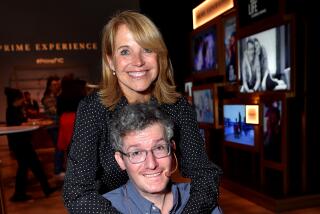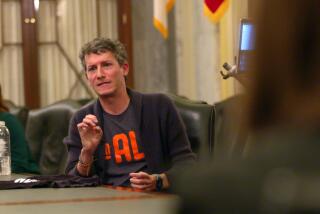Great Expectations : Discovery of the gene believed to carry ALS prompts optimism that therapies will be developed.
- Share via
John Taylor lost his wife and two sons to amyotrophic lateral sclerosis--ALS--and has feared for years that his twin daughters would be the next victims.
Two weeks ago, doctors identified the gene believed to carry the disease in some cases, which results in muscle wasting, paralysis and death. Taylor read the news with mixed emotions.
“I’m very happy about what this means for the people who could get ALS,” said Taylor, 68, of Chatsworth. “But I’m sad that it didn’t come soon enough to save my family.”
Taylor’s reaction is typical of family members who watched helplessly as their loved ones gradually lost muscle movement and died. ALS, or Lou Gehrig’s disease, named after the former New York Yankee first baseman who had to quit the game when he got sick, was first identified in 1869.
The breakthrough earlier this month is unquestionably the most important research development about the condition. Doctors believe that effective therapies might be developed within six months or a year.
“We have found the mutations,” said Dr. Teepu Siddique of Northwestern Medical School in Chicago, who, along with Dr. Robert H. Brown of Massachusetts General Hospital in Boston, led the team of 29 other researchers at 13 institutions in the United States. Siddique said doctors must perform many more tests before figuring out which therapies would be safe.
The gene discovery has provided a much-needed boost of optimism at the Woodland Hills-based ALS Assn., a national, nonprofit organization that counsels victims and family members, raises funds for research and serves as an information source for the medical profession.
“We’re walking eight or 10 feet off the ground,” said Lynn Klein, the association’s vice president. “When you’re dealing with a disease with no cure and everybody you’ve heard who has it dies, some days are really hard because you feel so negative. Now, we’ve been re-energized. I’ve been calling families and getting all choked up.”
In the first two days after the medical announcement, Klein said, the group received about 500 calls from people with ALS, or family members who wanted to know how to get tested for the gene and when therapies might be introduced. Normally, the association takes that many calls per month.
The ALS Assn., formed locally in 1985 because the then-president was a native Californian, has 27 chapters throughout the country and has established more than 100 support groups in 38 states, including five in Los Angeles County--Long Beach, Manhattan Beach, Pasadena, Northridge and Santa Monica. The national headquarters employs a staff of 16 in a office building on Ventura Boulevard.
To capitalize on the excitement generated by the research findings, the group quickly drafted a new fund-raising letter, hoping to collect more than the approximate $3 million it now raises annually from private donations.
“We feel a real ownership to this,” Klein said.
So does John Taylor. His two sons--one of whom died in 1988, the other in 1989--made sure that their body parts were donated for the research effort. His wife died in 1985.
Yet, despite the new hope, Klein warns against too much optimism.
“We are telling people to keep this in perspective,” she said. “It’s important to realize this is not a cure. There is still a lot more research to be done.”
Klein explained that the gene finding only relates to about half the people who contract the “familial” ALS, which is about 5% to 10% of the about 5,000 cases diagnosed annually. The majority of victims acquire “sporadic” ALS, which strikes randomly, although scientists are confident that the breakthrough will eventually affect those cases, as well.
Laura Ziegler, 36, has no trouble with perspective. Last year, she began suffering the same symptoms of ALS, but has not been officially diagnosed--a distinction that she considers irrelevant. She is hooked up to a ventilator and must talk in sync with the cycle of the machine. Eleven of her relatives died of familial ALS.
“I’m scared that it’s not really going to help anyone,” said Ziegler, of Los Angeles, who has seen her hope dashed before by inconclusive findings.
Added her husband, Doug Ziegler: “We’ve both taken biology classes, and we know the reality that it will take awhile before they can pin this down and come up with a therapy. There is still no treatment.”
Yet there is a sense of hope in the Ziegler household. “We feel very confident that our children won’t die as a result of this,” said Doug Ziegler. “And that feels good.”
More to Read
Sign up for Essential California
The most important California stories and recommendations in your inbox every morning.
You may occasionally receive promotional content from the Los Angeles Times.













